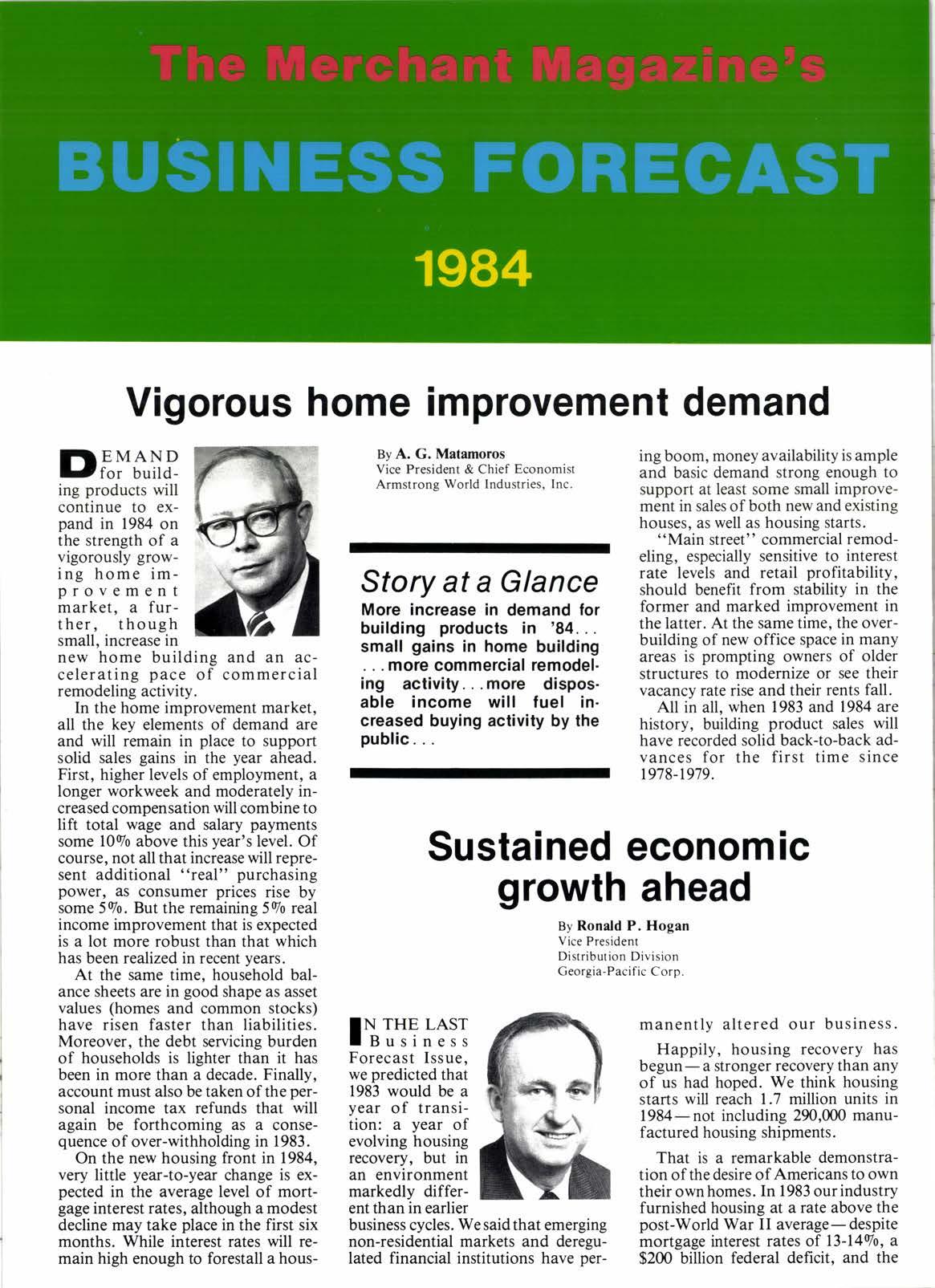
1 minute read
Sustained economic growth ahead
By Ronald P. Hogan Vice President Distribution Division Ceorgia-Pacific Corp.
IN
THE LAST I Business
Forecast Issue, we predicted that 1983 would be a year of transition: a year of evolving housing recovery, but in an environment markedly different than in earlier business cycles. We said that emerging non-residential markets and deregulated financial institutions have per- manently altered our business. Happily, housing recovery has begun- a stronger recovery than any of us had hoped. We think housing starts will reach 1.7 million units in 1984-not including 290,000 manufactured housing shipments.
That is a remarkable demonstration of the desire of Americans to own their own homes. In 1983 our industry furnished housing at a rate above the post-World War II average- despite mortgage interest rates of l3-l4Vo, a $200 billion federal deficit, and the highest level of unemployment in 43 years.
Nevertheless, three-fifths of the nation's single family dwellings are more than 15 years old-excellent candidates for renovation, repairs and alterations. Improving new home values will push R, R & A spending up as much as l2s/o in 1984.
New non-residential construction will improve modestly, thanks to better corporate profits. But retrofit of existing offices and warehousesparticularly energy-related pro- jects-will become the largest nonresidential segment within several years.
Despite much pessimism, many factors point to long-term sustained economic growth in the United States:
Story at a Glance
Stronger housing recovery than expected. .renovation, repairs and alteration spend. ing io climb. . non-residential construction bolstered by retrof it projects. . good business climate for rest of decade.
new technologies employed by a maturing labor force in the largest and most stable free-trade area in the world.
The federal deficit is unacceptably high. But financial deregulation and lower income taxes allowed new personal savings to reach $210 billion this year - up 2590 from 1980. With good management and good luck, this increased savings level will moderate interest rates long enough for recovery to help reduce the deficit.
Further, we think the election will confirm policies which encourage saving, investment and production, creating a climate for rational, profitable, business planning for the rest of the decade.
We think all of these factors point to a successful 1984.










